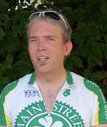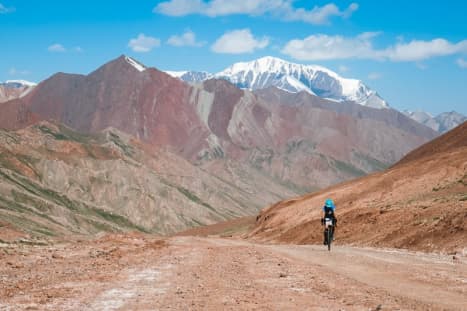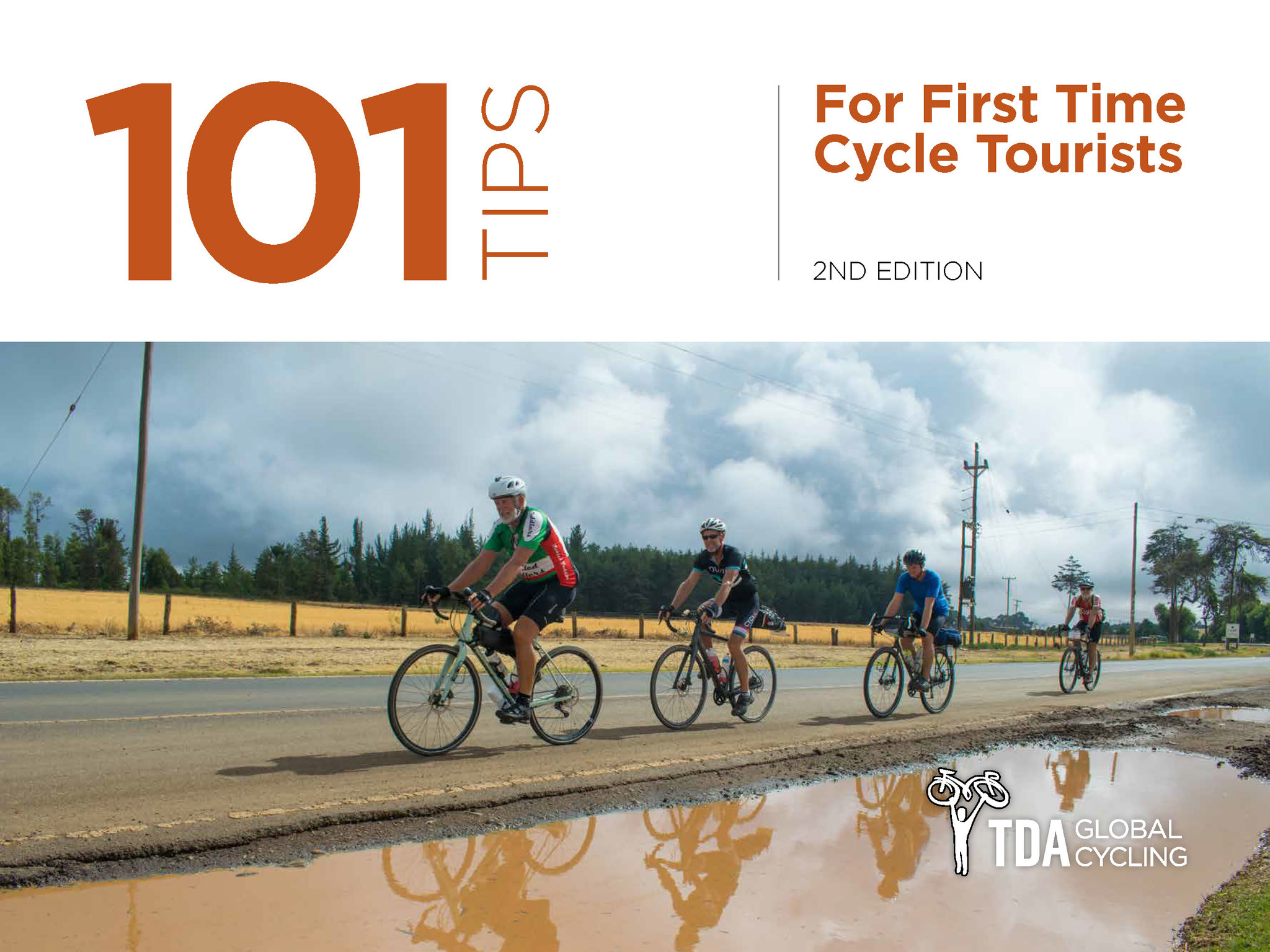Blog
Introducing Coach Rob with an 8 Part Series on Training for the Silk Route Bicycle Expedition

Coach Rob here and am I excited!
Paul, your tour director, has asked me to help all of you aspiring Silk Route Riders by writing articles and offering coaching services to those who are joining the tour. Before I go on to write about pacing strategies I will take a moment to introduce myself.
I am Coach Rob Grissom a cycling coach and the owner of Positive Performance Coaching as well as a co-host of the Cycling 360 Podcast. I coach adult recreational and competitive cyclists. Many of my athletes are coached through what I call Virtualized Coaching. Technology has allowed me to reach out and coach athletes from all over the North and South America, Europe and even Asia.
If you are interested in hiring a coach I hope you consider looking into my coaching services. In an upcoming TdA newsletter I will be offering discounts for all those participating in the tour. OK enough about me…
8 Articles plus Q&A
I will be writing several articles on topics that Paul and I thought would be beneficial to those who are going to be embarking on a long tour. I would also like to extend the series of articles by allowing you the reader to ask questions. These questions I will answer in a follow up Q&A article(s) as long as we have enough questions to warrant the article(s). I will also point readers to other relevant materials I have already produced on these topics.
Please email you questions to:
Part One:
Pacing Strategies:
One of my favorite topics that covers many concerns for both competitive and recreational riders is Pacing Strategies. What do I mean when I say pacing? Pacing simply means to move (speed) at a particular rate (Cadence) and tempo (Specific Heart Rate or Power Zone). Looks like I have already made the article technical but it really isn’t when you think about it. Setting a pace for most cyclist’s means that the cyclist is consciously or unconsciously settling into a speed and cadence that they feel is appropriate for the ride they are doing.
Lets go ahead and expand on Speed, Cadence and Tempo and the part they play in a cyclists ride.
Speed is nothing more than how fast are you riding your bicycle. Is there a perfect speed that cyclist should attain? No there is not. Each cyclist is different, each bike is different, and each ride and its terrain are different. I think that many recreational cyclists have a dream average speed and it usually seems to range between 16-21MPH. For some this is a very easy to obtain average speed and for others it may feel insurmountable. Should you reach for something so heady, sure but using an average speed, as a milestone is probably not the best use of your riding and or training time.
Cadence is how fast or slow you can spin your legs in an effort to pedal your bike and move it forward. In the past decade several professional cyclists have employed training to develop the cadence of a Humming Bird. Can recreational and amateur cyclists benefit from a developing faster cadence? Yes, yes and yes! Developing leg speed will help all cyclists with what we coaches like to refer to as economy and efficiency. Being able to spin any gear at a higher RPM (Cadence) requires a very smooth pedal stroke. Having a smooth pedal stroke means that the cyclist is using less force to move the bike forward. The cyclist is able to do more work with what would appear to be less effort but what the cyclist has really done is become more efficient in the use of their limited physical resources.
Tempo is usually thought of, as something a musician needs to be concerned with. How fast or slow the music is being played over the duration of a song. We cyclists use the same analogy a couple of different ways. We think just like the musician when it comes to speed such, as “I would like to set in a nice steady tempo over the next 5 miles of rolling terrain.” We coaches on the other hand have a secret. We know what pace tempo is and it can be measured! Cyclists can determine Tempo by riding in a predetermined zone using Perceived Exertion, Heart Rate and or Power (Watts).
Ok now that we have the basics that make up pacing lets look into the role it plays in a ride.
I like to tell competitive and recreational athletes that it’s important to finish strong! I am not only talking about their races and event rides but their training as well. Why is it important for cyclists to finish strong? Well if you start your ride with the mind set that you need to finish strong your not as likely to foolishly use yourself up at the beginning of a ride and not finish the ride.
Speed is a byproduct
When I talk about speed being a byproduct what I am saying is that the speed you are going at any given time is effected by many variables such as: terrain, weather, fitness, other riders and nutrition and hydration. So rather than fixating on how fast you want to go focus on how you are feeling in the moment, how is your pedal stroke, what is your heart rate and or power doing, are you starting to fatigue, is the terrain going to get easier or harder as you progress through the ride.
Cadence is important, but is it?
I like the athletes that I coach to pay attention to their cadence and in most cases many athletes can improve their cadence. However if I were to rate how important it is to improve an athlete’s cadence I would not rate it as a top training factor. If you are consistently riding with an average of <70 RPM you should look at improving your cadence. If you are riding with an average RPM of 80-90 RPM your doing well but there is room for improvement. If you are riding with an average of >90 RPM you are doing fine and should not worry about working on cadence as much.
Tempo – Know your zones
As I mentioned before we coaches have a secret. We know what the Tempo Zone is. The tempo zones are as follows:
RPE Zone for tempo riding is – RPE Zone 4-5
Heart Rate Zone for tempo riding is – HR Zone 3-4
Power Zone for tempo riding is – Pwr Zone 3-4
Why do I give a range? There are several graded training zone scales for RPE, Heart Rate and Power. Depending on the Sports Scientist or Coach you read or work with is which graded zone you will use. The most popular of these graded zones would use the lower of the 2 numbers.
Strategies for pacing
There are no big secrets when it comes to pacing for a long ride but here are some strategies that have served me well.
? Start with the end in mind – Know what you are getting your self into. Know the route and its elevations.
? Don’t fixate on the whole ride – Instead break your ride in to smaller sections and plan for how you will ride each section.
? Use a negative split strategy – Start your ride or the section of a ride much easier than you would normally and pick up the pace as you near the end of your ride or section of that ride.
? Use a smart nutrition and hydration strategy – Never ever wait to your hungry or thirsty to drink or eat! Take a sip of water every 5 minutes and a nibble of some food every 15 minutes.
I hope you found this article useful in your endeavor’s to prepare for your amazing ride across the Silk Route!
If you have question about this article or other specific questions related to training and riding feel free to pass them on to Paul or myself at
Rob@PositivePerformanceCoaching.com
 REGISTER NOW
REGISTER NOW




1 Comment for "Introducing Coach Rob with an 8 Part Series on Training for the Silk Route Bicycle Expedition"
[…] Introduction Climbing Secrets Hydration Tips Becoming an Efficient rider Cycling Posture Bike Fit Bike Nutrition Strategies Mental Toughness […]